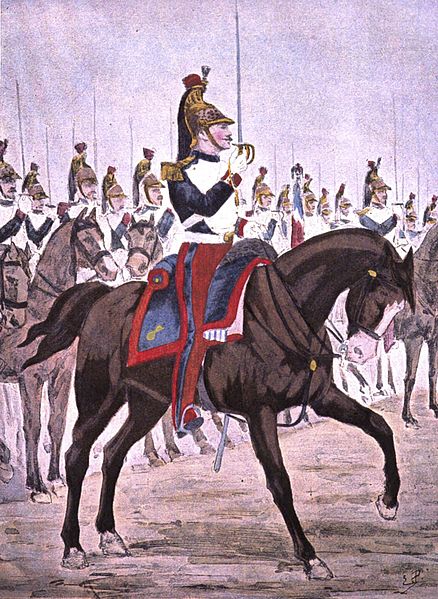1
Regiments / Infantry Regiment Nr. 7 [NA] *Merged*
« on: November 15, 2016, 06:22:21 pm »Infantry Regiment Nr. 7

History:
Re-formed after the debacle of 1806/7, the 2nd West Prussian Infantry Regiment was also known as Infantry Regiment Number 7. Formerly known as Infantry Regiment 58, it was formed on 12 September 1797 at Königskrone. It was active in East Prussia in the 1807 campaign, fighting at Braunsberg and Hagelberg.
In 1808 the regiment was re-formed with the standard organisation for a Prussian infantry regiment of the time. It had two grenadier companies (detached to the West Prussian Grenadier Battalion, later the 2nd Battalion of the 2nd Grenadier Regiment "Kaiser Franz"), two musketeer battalions and one fusilier (light infantry) battalion. From 1813 a company of volunteer rifles (Freiwilliger Jäger) was also attached.
Re-formed after the debacle of 1806/7, the 2nd West Prussian Infantry Regiment was also known as Infantry Regiment Number 7. Formerly known as Infantry Regiment 58, it was formed on 12 September 1797 at Königskrone. It was active in East Prussia in the 1807 campaign, fighting at Braunsberg and Hagelberg.
In 1808 the regiment was re-formed with the standard organisation for a Prussian infantry regiment of the time. It had two grenadier companies (detached to the West Prussian Grenadier Battalion, later the 2nd Battalion of the 2nd Grenadier Regiment "Kaiser Franz"), two musketeer battalions and one fusilier (light infantry) battalion. From 1813 a company of volunteer rifles (Freiwilliger Jäger) was also attached.

In 1812 the regiment provided its 1st musketeer battalion and the fusilier battalion to form the 5th Combined Regiment by amalgamation with a battalion from the 1. Westpr IR Nr 6. It saw action against the Russians at St Olav, Schlockhof and Thamdorf, where it captured 9 officers and 378 men from the Russians. The regiment returned to Prussia under the Treaty of Tauroggen, having lost 8 officers and 320 men in that campaign.
Leibfahne (or 1st Battalion's Colour)
In the Liberation War against France the regiment was very active. The battalions of the regiment were present, still as the "5th Combined Infantry Regiment", at Gross Görschen and Bautzen. It also saw action, now as the 2nd West Prussian Regiment, at Dresden, Kulm, Peterswalde and Leipzig. During 1814 the regiment was present at Etoges, Laon, Pontavaire and finally Paris.
In 1815 the regiment was present at Ligny as part of 3 Brigade in I Korps. The regiment had lost 82 officers, 160 NCO's, 161 volunteer riflemen and 2159 soldiers during the Napoleonic Wars.
In the Liberation War against France the regiment was very active. The battalions of the regiment were present, still as the "5th Combined Infantry Regiment", at Gross Görschen and Bautzen. It also saw action, now as the 2nd West Prussian Regiment, at Dresden, Kulm, Peterswalde and Leipzig. During 1814 the regiment was present at Etoges, Laon, Pontavaire and finally Paris.
In 1815 the regiment was present at Ligny as part of 3 Brigade in I Korps. The regiment had lost 82 officers, 160 NCO's, 161 volunteer riflemen and 2159 soldiers during the Napoleonic Wars.

Regimentsfahne (or 2nd Battalion's Colour)
After the Napoleonic Wars the regiment was redesignated the 7th Grenadier Regiment "King's Grenadier Regiment (2nd West Prussian)" in 1860.
After the Napoleonic Wars the regiment was redesignated the 7th Grenadier Regiment "King's Grenadier Regiment (2nd West Prussian)" in 1860.
if interested add or join the Offical Website
Website: http://infantryregimentnr6.enjin.com/
steam: [Nr. 7] Ben
Steam Link: https://steamcommunity.com/id/ConfederateGeneral/
Website: http://infantryregimentnr6.enjin.com/
steam: [Nr. 7] Ben
Steam Link: https://steamcommunity.com/id/ConfederateGeneral/





